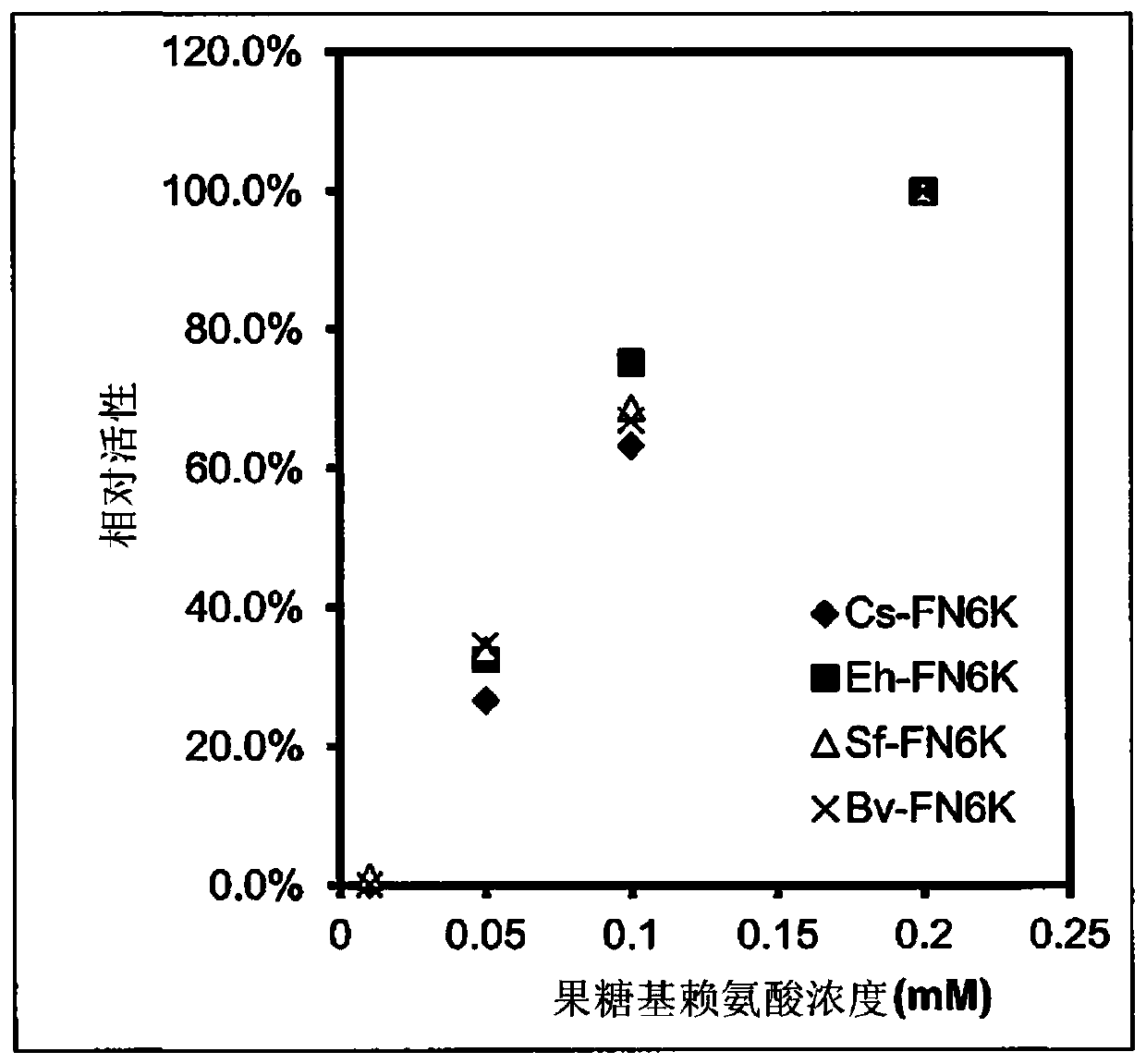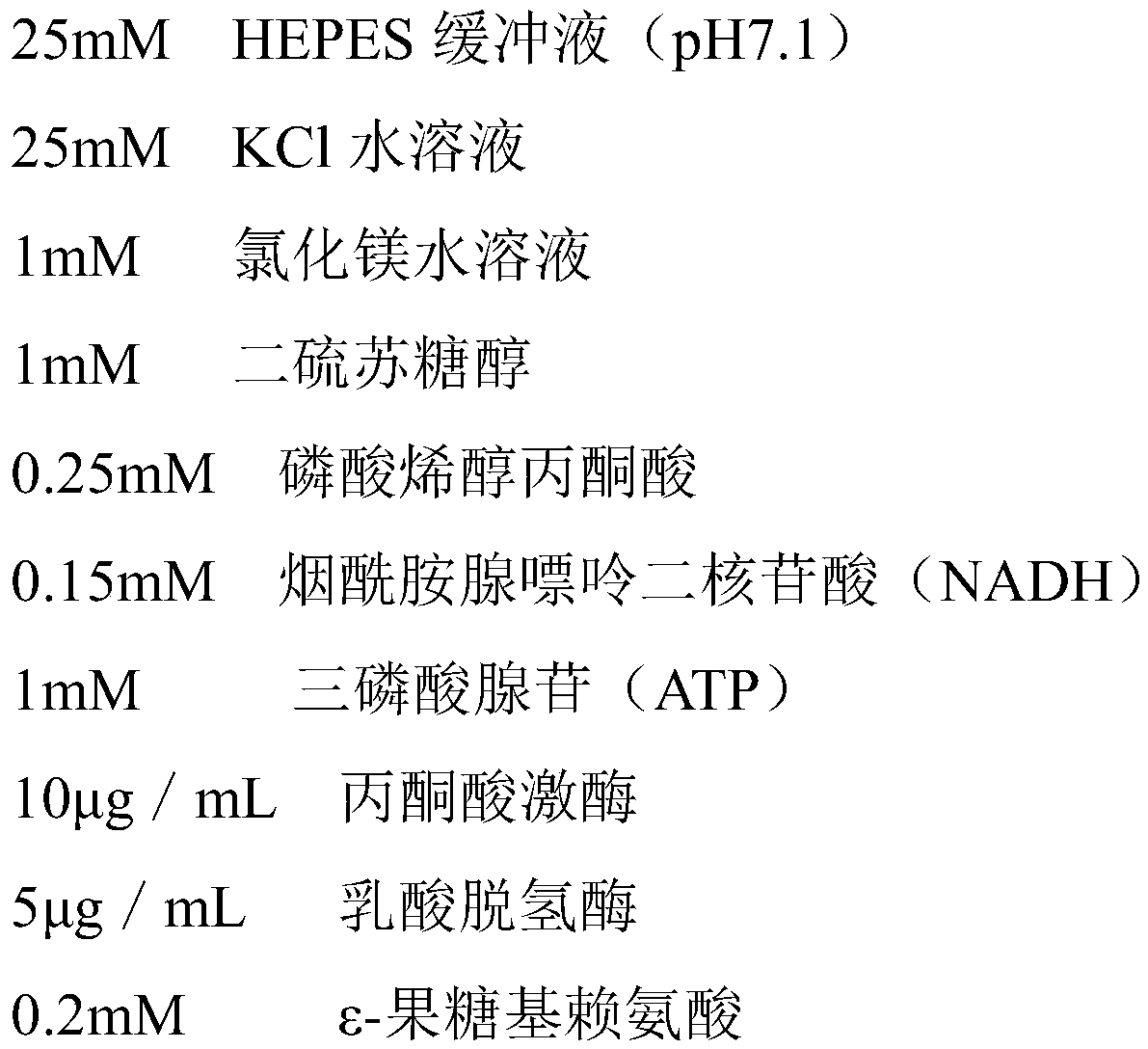Method for measuring fructosyl lysine
A fructosyllysine and determination method technology, which is applied in the field of determination of fructosyllysine, can solve the problems of low substrate specificity, poor temperature stability, and low specific activity of the latter, and achieve excellent substrate specificity, High temperature stability and high stability effect
- Summary
- Abstract
- Description
- Claims
- Application Information
AI Technical Summary
Problems solved by technology
Method used
Image
Examples
Embodiment 1
[0139] Example 1 Obtaining and measuring activity of FN6K
[0140] Targeting the genes of known strains, screening was carried out using primers for acquiring the FN6K gene designed based on known literature. As a result, the following 4 sets of primers were finally used to select from Cronobacter sakazakii (NBRC102416), Escherichia herschei ( Escherichia hermannii NBRC105704) (It should be noted that in MicrobiolImmunol.2016; 60(5):303-11, it was proposed to reclassify Escherichia Hermannii into Hermann Atlantis, so they are the same), Ju Quansha Serratia fonticola NBRC102597 and Bacillus vireti NBRC102452 acquired four genes (DNA sequences of SEQ ID NOs: 1, 2, 3, and 4) thought to produce fructosamine-6-kinase (FN6K).
[0141] 1) Primers for acquiring genes derived from Cronobacter sakazakii
[0142]
[0143] 2) Primers for acquiring genes derived from Escherichia hermitia
[0144]
[0145] 3) Primers for acquiring genes derived from Serratia citiensis
[0146]
...
Embodiment 2
[0157] The evaluation of the pH stability of the FN6K that embodiment 2 obtains
[0158] Solutions in which four novel FN6Ks and Ec-derived FN6K were dissolved in buffers with different pH were prepared, left to stand at 30° C., and the residual activity after 60 minutes was measured. 1M buffer (sodium phosphate buffer (pH 5.0 and 6.0), potassium phosphate buffer (pH 7.0) and Tris-HCl buffer (pH 8.0 and 9.0)) was used as the buffer, and the final concentration was 100 mM way to prepare for use. In addition, the pH of the buffer solution prepared was measured with the pH meter, and the value of pH stability was shown from the measured value. The assay method of FN6K activity follows the above-mentioned FN6K activity assay method. Table 3 shows the pH range in which the residual activity was 80% or more when the activity before treatment was 100%.
[0159] [table 3]
[0160]
[0161] FN6K derived from Ec is stable at pH 5.6 to 7.1. In contrast, the four FN6Ks obtained t...
Embodiment 3
[0162] Evaluation of the temperature stability of FN6K obtained in embodiment 3
[0163] Four novel FN6Ks and FN6K from Ec were left in the most stable buffer at 0, 30, 40, 45, 50°C for 30 minutes to evaluate the residual activity. For Cs-derived FN6K, Sf-derived FN6K, Bv-derived FN6K, and Ec-derived FN6K, 100 mM potassium phosphate buffer at pH 7.0 was used, and for Eh-derived FN6K, 100 mM sodium phosphate buffer at pH 6.0 was used. The activity of the enzyme treated at 0°C for 30 minutes was set as 100%, and the residual activity was measured. The assay method of FN6K activity follows the above-mentioned FN6K activity assay method. Table 4 shows the temperature range showing a residual activity of 90% or more.
[0164] [Table 4]
[0165]
[0166] The four types of FN6K obtained this time all showed equivalent or higher temperature stability than the known Ec-derived FN6K.
PUM
 Login to View More
Login to View More Abstract
Description
Claims
Application Information
 Login to View More
Login to View More - R&D
- Intellectual Property
- Life Sciences
- Materials
- Tech Scout
- Unparalleled Data Quality
- Higher Quality Content
- 60% Fewer Hallucinations
Browse by: Latest US Patents, China's latest patents, Technical Efficacy Thesaurus, Application Domain, Technology Topic, Popular Technical Reports.
© 2025 PatSnap. All rights reserved.Legal|Privacy policy|Modern Slavery Act Transparency Statement|Sitemap|About US| Contact US: help@patsnap.com



